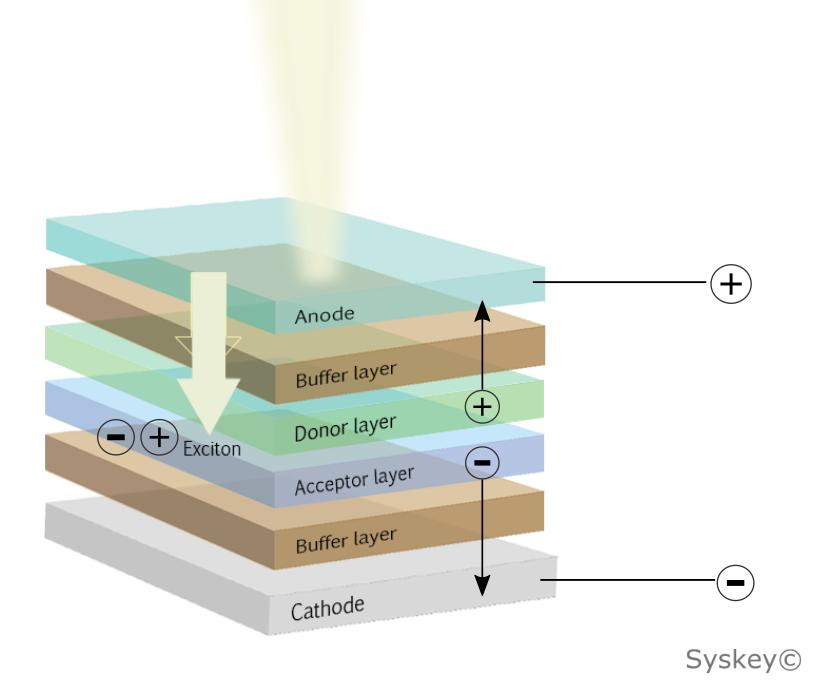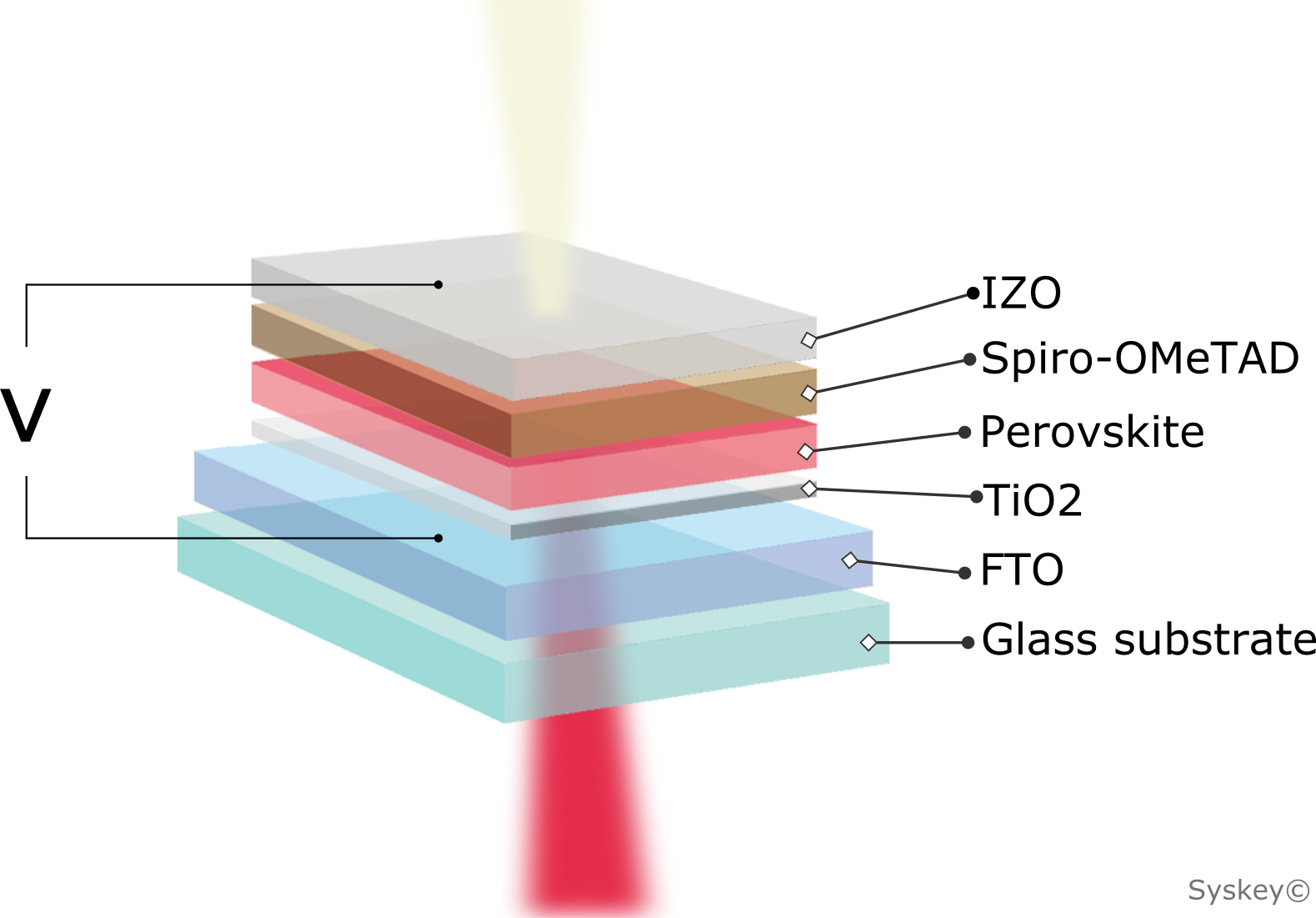 Organic solar cell is a type of photovoltaic solar cell using organic semiconductor type material. Organic Photovoltaic (OPV) is represent a recent photovoltaic technology that convert solar energy into electrical energy. A typical OPV device consists of one or several photoactive materials sandwiched between two electrodes.
Organic solar cell is a type of photovoltaic solar cell using organic semiconductor type material. Organic Photovoltaic (OPV) is represent a recent photovoltaic technology that convert solar energy into electrical energy. A typical OPV device consists of one or several photoactive materials sandwiched between two electrodes.
 In a OPV cell, sunlight is absorbed in the photoactive layers composed of donor and acceptor semiconducting organic materials to generate photocurrents. The donor material donates electrons and mainly transports holes and the acceptor material withdraws electrons and mainly transports electrons. As depicted in Figure 2, those photoactive materials harvest photons from sunlight to form excitons, in which electrons are excited from the valence band into the conduction band (light absorption). Due to the concentration gradient, the excitons diffuse to the donor/acceptor interface (exciton diffusion) and separate into free holes (positive charge carriers) and electrons (negative charge carriers) (charge separation). A photovoltaic is generated when the holes and electrons move to the corresponding electrodes by following either donor or acceptor phase (charge extraction).
In a OPV cell, sunlight is absorbed in the photoactive layers composed of donor and acceptor semiconducting organic materials to generate photocurrents. The donor material donates electrons and mainly transports holes and the acceptor material withdraws electrons and mainly transports electrons. As depicted in Figure 2, those photoactive materials harvest photons from sunlight to form excitons, in which electrons are excited from the valence band into the conduction band (light absorption). Due to the concentration gradient, the excitons diffuse to the donor/acceptor interface (exciton diffusion) and separate into free holes (positive charge carriers) and electrons (negative charge carriers) (charge separation). A photovoltaic is generated when the holes and electrons move to the corresponding electrodes by following either donor or acceptor phase (charge extraction).
Figure 1. Structure of a organic photovoltaic device

Figure 2. Functional mechanism of a bilayer organic photovoltaic.
Perovskite Solar Cells
 One of the PV devices is recently developed with more expectations is Perovskite Solar Cells (PSC). A perovskite solar cell includes a perovskite structured compound, most commonly a hybrid organic-inorganic lead or tin halide-based material, as the light-harvesting active layer. PSC advantages are basically the same as organic semiconductors. Moreover, in few short years, work develope perovskite material has advanced rapidly as a result of the material's excellent light absorption, long diffusion length and long minority carrier lifetimes, resulting in high device efficiencies ( over 23%) with significant opportunities to realize a low-cost, industry-scalable technology. However to commercialize the PSC, it's still take some time to resolve several issues such as film quality and thickness, break down quickly due to exposure of heat, moisture, snow etc and the material is toxic in nature.
One of the PV devices is recently developed with more expectations is Perovskite Solar Cells (PSC). A perovskite solar cell includes a perovskite structured compound, most commonly a hybrid organic-inorganic lead or tin halide-based material, as the light-harvesting active layer. PSC advantages are basically the same as organic semiconductors. Moreover, in few short years, work develope perovskite material has advanced rapidly as a result of the material's excellent light absorption, long diffusion length and long minority carrier lifetimes, resulting in high device efficiencies ( over 23%) with significant opportunities to realize a low-cost, industry-scalable technology. However to commercialize the PSC, it's still take some time to resolve several issues such as film quality and thickness, break down quickly due to exposure of heat, moisture, snow etc and the material is toxic in nature.
Figure 3. Structure of a perovskite solar cell.
OPV
Organic photovoltaic (OPV) solar cells aim to provide an Earth-abundant and low-energy-production photovoltaic (PV) solution. Because various absorbers can be used to create colored or transparent OPV devices, this technology is particularly appealing to the building-integrated PV market. Recently, organic photovoltaics already achieved efficiencies 15%, but long-term reliability remain significant barriers. The low efficiencies of OPV cells are related to their small exaction diffusion lengths and low carrier motilities, these are contrary to inorganic PV. To solve these issues, recently researchs are mainly forcus on improving the absorber material, and research is being done to further optimize the absorbers and develop an organic multijunction architectures. Improved encapsulation and alternative contact materials are being investigated to reduce cell degradation and push cell lifetimes to industry-relevant values.






















